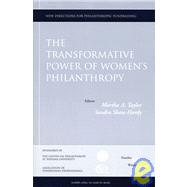
MARTHA A. TAYLOR is vice president of the University of Wisconsin Foundation and founder of its Council on Women's Giving of the Bascom Hill Society, the first such program at a large coeducational institution.SONDRA C. SHAW is assistant vice president for external affairs at Western Michigan University. Sondra C. Shaw and Martha A. Taylor are cofounders and co-directors of the National Network on Women as Philanthropists.
|
|||
|
|||
|
|||
|
|||
|
|||
|
|||
|
|||
|
|||
|
|||
|
|||
|
|||
|
|||
|
|||
|
|||
|
|||
|
|||
|
|||
|
|||
|
|||
|
|||
|
|||
|
|||
|
|||
|
|||
|
|||
|
|||
|
|||
|
|||
|
The New copy of this book will include any supplemental materials advertised. Please check the title of the book to determine if it should include any access cards, study guides, lab manuals, CDs, etc.
The Used, Rental and eBook copies of this book are not guaranteed to include any supplemental materials. Typically, only the book itself is included. This is true even if the title states it includes any access cards, study guides, lab manuals, CDs, etc.